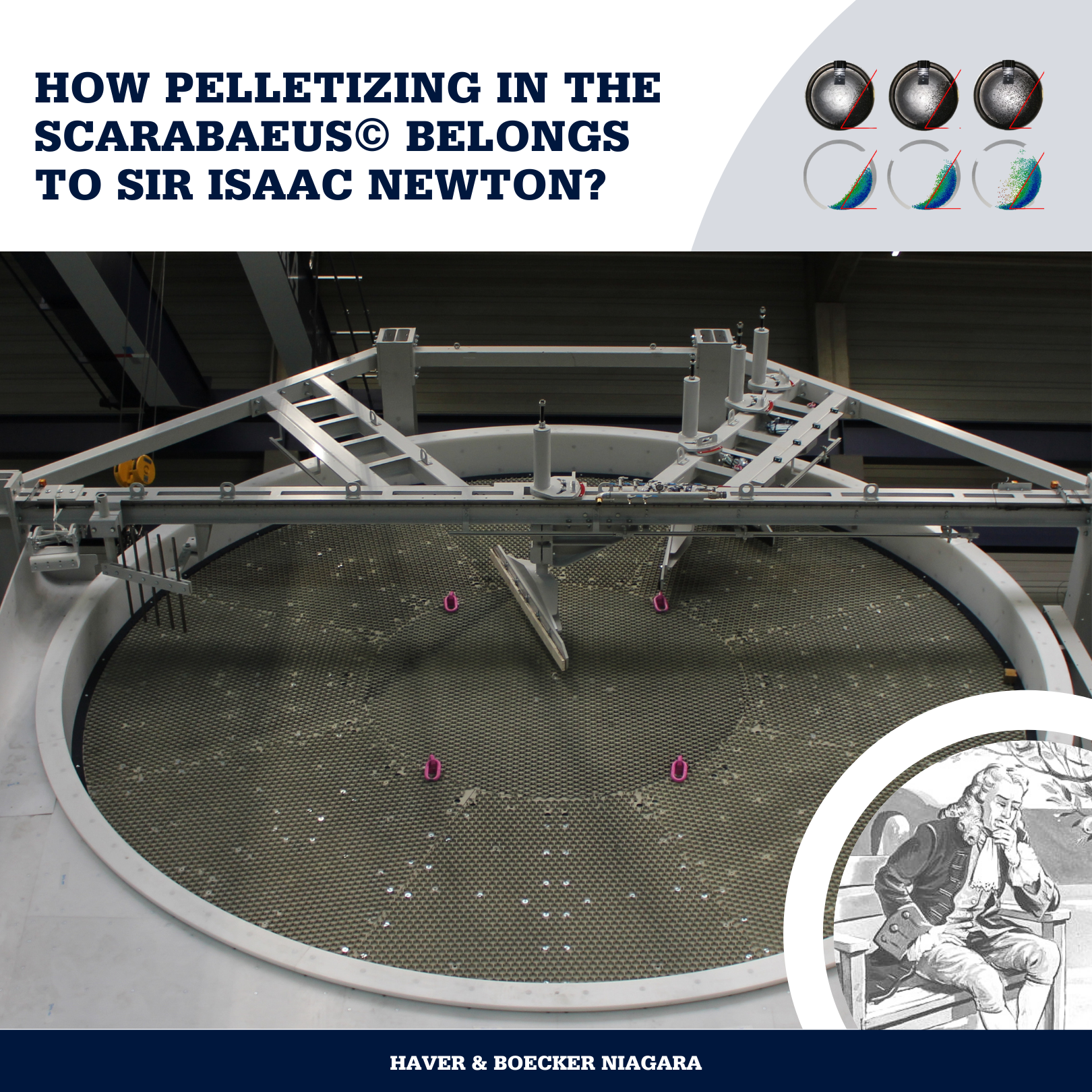
Based on more than 140 years of experience in the design, construction and commissioning of screening machines and pelleting disks as well as entire processing plants, we improve our technology every day. In an intensive exchange with our customers, we are focusing the symbiosis of machine and material with the background of variating environmental conditions and goals. In order to ensure that in our brand new screening and pelletizing laboratory in Freiberg we not only meet the challenge of best equipment for individual processes, but we are also conducting numerious researches and develope methods that are later used in the continuous improvement of machines and processes. Recently, we worked with together with the Institute for Mineral Processing Machines and Recycling Systems Technology, as well as the Institute of Mechanics and Fluid Dynamics, both TU BERGAKEDEMIE Freiberg and its Associated Institute HAVER ENGINEERING GmbH, to analyze the particle motion in a pelletizing disc using the discrete element method (DEM).
DEM can be used to simulate comminution, classification, mixing and sorting processes. The discrete element method is a modeling approach for the numerical calculation of the motion behavior of granular media. Unlike finite element method (FEM), DEM does not consider matter as a continuum, but as a dis-continuum. Instead of dividing into volume elements, the basic idea behind DEM is to describe bodies by smaller particles. Thus, the method is particle-based. The particles can interact with each other. Depending on the simplification, the interactions can be defined by contact models. For this purpose, new approaches have been developed in the last years. Newton’s axioms are the basis of the simulation.
“An object at rest will stay at rest, and an object in motion will stay in motion unless acted on by a net external force. Mathematically, this is equivalent to saying that if the net force on an object is zero, then the velocity of the object is constant.”
“The rate of change of momentum of a body over time is directly proportional to the force applied, and occurs in the same direction as the applied force.”
“All forces between two objects exist in equal magnitude and opposite direction: if one object A exerts a force FA on a second object B, then B simultaneously exerts a force FB on A, and the two forces are equal in magnitude and opposite in direction: FA = −FB.”
This knowledge allows our design engineers to adapt individual components of the pelleting disc even better to the individual challenges of the individual properties of the material in the agglomeration process. In addition, these analyses provide valuable results, which our automation engineers incorporate into the continuous improvement of the control technology of the SCARABAEUS©. This is done with the aim of creating the best possible conditions for our customers to produce the best possible pellets in an energy-efficient manner.
The fact that this development has been recognized by the peer-review method for ensuring the quality of scientific publications and the resulting publishability both pleases and honors us.
The full article can be found here: https://link.springer.com/article/10.1007/s10035-021-01121-6
“Pelletizing processes are used in various industries to agglomerate fine materials. Investigation of this process is important for optimizing corresponding equipment and machines. In this article the particle-based discrete element method is used to simulate the particle behavior of a dry material on an inclined rotating disc (pelletizing disc). The process is modelled in different rotation regimes and by varying the inclination angle of the disc. Qualitative model verification is performed by a comparison of numerical simulations with experimental data. Contact data is used to analyze the flow mode of the simulated material and for detecting critical rotation speeds.”
Take a look here: https://link.springer.com/article/10.1007/s10035-021-01121-6
Back
Our global network of experience allows us to solve the most unique problems.
Florian Festge, Haver & Boecker Managing Partner